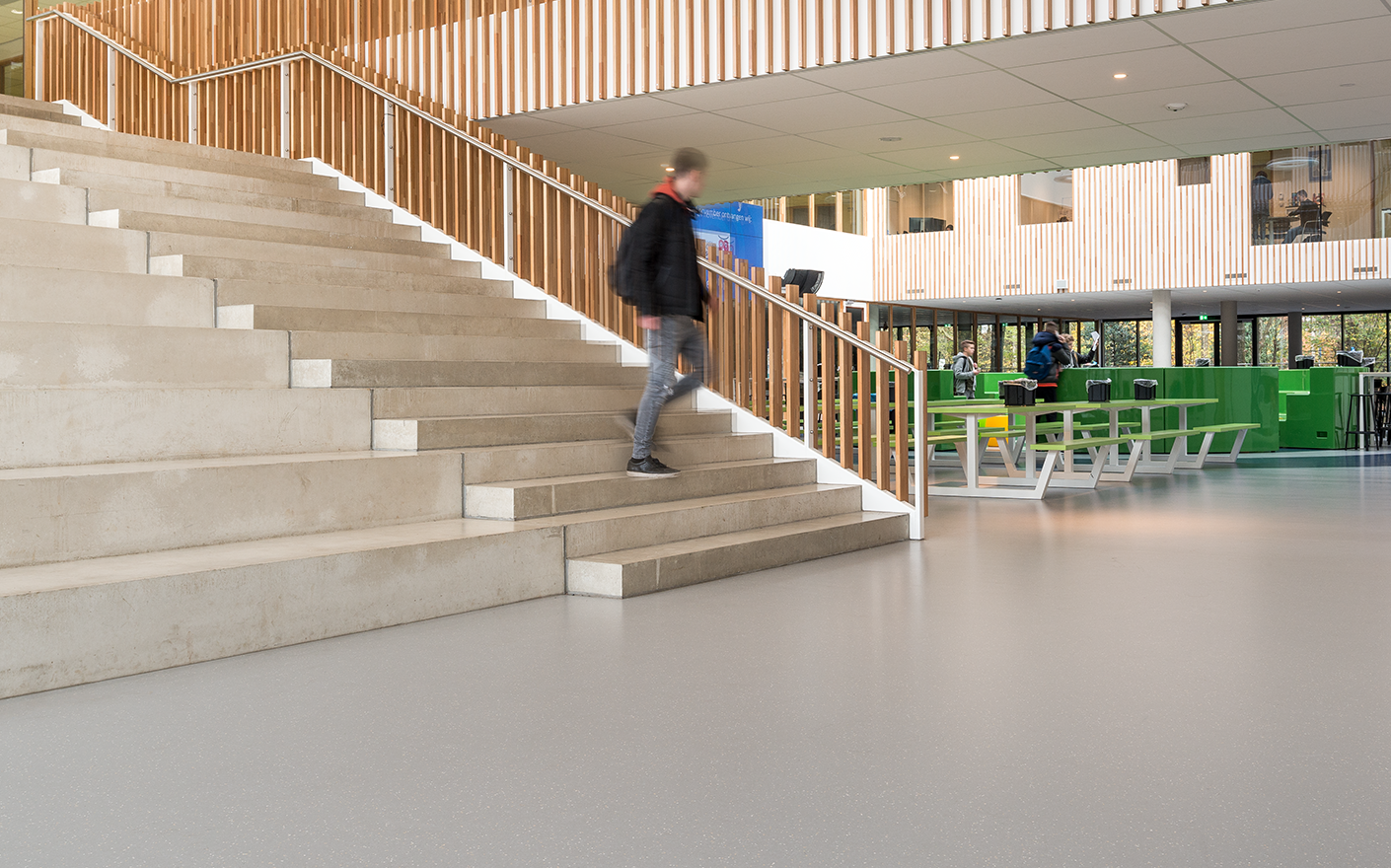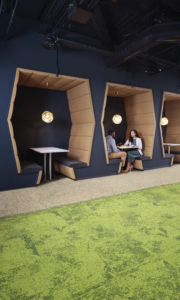How to use purchasing to drive out waste and lower emissions
As we all know, the higher education segment is considered a leader in setting and achieving sustainability goals. However, there may be an untapped opportunity for higher education facilities to further reduce their carbon footprints through their supply chains.
 In partnership with organizations such as AASHE, colleges and universities are actively pledging to pursue carbon neutrality and waste reduction. However, some universities may not recognize all of the opportunities for improvement. By only focusing on internal commitments and actions, they allow their supply chains to introduce carbon-intensive materials to their campus without accounting for how these purchases unintentionally contribute to global warming.
In partnership with organizations such as AASHE, colleges and universities are actively pledging to pursue carbon neutrality and waste reduction. However, some universities may not recognize all of the opportunities for improvement. By only focusing on internal commitments and actions, they allow their supply chains to introduce carbon-intensive materials to their campus without accounting for how these purchases unintentionally contribute to global warming.
The result? A hidden carbon footprint that undercuts the university’s sustainability goals.
By better understanding the two types of carbon emissions – embodied and operational – university stakeholders can begin to understand and seize new opportunities to reduce their contribution to global warming.
Understanding Your University’s Carbon Footprint
For all building products and materials used throughout a campus, carbon is released in two stages: the embodied carbon stage and the operational carbon stage. The most commonly referenced, operational carbon, is defined as the greenhouse gases emitted during the use of a building. On the other hand, embodied carbon is the carbon footprint of a material and considers all greenhouse gases emitted during the creation of a product, including raw material extraction and manufacturing.
Why is it important to understand the difference? The building and construction sector is responsible for nearly 40% of global greenhouse gas emissions related to energy use. And embodied carbon will be responsible for almost half of total new construction emissions between now and 2050. While it is critical for higher education stakeholders to decrease both emission types, many facilities have already taken steps to lower their operational carbon, so reducing embodied carbon is the most urgent opportunity. In fact, studies have found that many public institutions’ embodied carbon emissions from purchased goods exceed their total operational emissions.

Material choice can play a huge role in reducing embodied carbon. For example, flooring represents a substantial opportunity to reduce embodied carbon, given that emissions to make a square yard of flooring can vary by more than tenfold. Because budget-friendly flooring products that are carbon neutral across their full product life cycle are already available, flooring represents one of the most obvious places for universities to begin reducing their carbon footprint from purchased goods.
Furthermore, select carpet tiles are carbon negative when measured cradle-to-gate, taking carbon reduction goals to the next level. After these products are made, there is less carbon dioxide in the atmosphere than if the tile had not been manufactured in the first place.
Those looking to better understand their building materials’ potential carbon impact can employ tools such as the free, open access Embodied Carbon in Construction Calculator (EC3) tool. EC3 allows users to do side-by-side carbon comparisons of individual materials, making it easy to specify and procure low-carbon options based on available products.
Selecting Vendor Partners Committed to Sustainability
Colleges and universities should begin with an overall sustainability vision. This gives leadership the opportunity to evaluate the environmental impacts of the university’s existing systems and future practices.
The next step is to identify vendors and manufacturers that align with the college’s or university’s sustainability goals. This is essential to reduce the environmental impact of their built spaces, especially when considering long-term commitments like building materials. Many manufacturers claim to be “sustainable,” but are they? The truth is that no company is 100% sustainable, but some have made more progress than others. To select a vendor that reinforces your school’s sustainability goals, consider inquiring about its sustainability efforts. Ask them to answer questions such as:
- Can you provide some examples of how your company has helped other customers advance toward their sustainability goals?
- How does the carbon footprint of your product compare to others in the category?
- How much of your company’s energy comes from renewable sources?
- What percentage of your company’s products contain recycled or bio-based materials?
- What steps is your company taking to reduce its carbon footprint?
 When reviewing different vendors, it is vital to understand the implications of material choice on sustainability. How potential partners respond to key questions will help identify vendors that align with the sustainability expectations outlined in the school’s vision.
When reviewing different vendors, it is vital to understand the implications of material choice on sustainability. How potential partners respond to key questions will help identify vendors that align with the sustainability expectations outlined in the school’s vision.
Another point to consider when specifying products is what end-of-life considerations have been instituted by the manufacturer. Some companies provide takeback programs like ReEntry™, which minimizes the landfill burden of flooring by reclaiming select carpet tile and luxury vinyl tile products. These types of efforts can help institutions attain their goals for solid waste diversion. To gauge the quality of a vendor’s program, take into account the following:
- How long is the product expected to stay in service?
- Are products taken back actually recycled?
- What percentage of old products can be repurposed or refurbished?
- What is the amount of new product actually produced from old product?
- What third party is used to verify their recycling process claims?
By aligning sustainability goals and values with vendors, universities and colleges can also make progress with respect to carbon neutrality. For example, when the Northern Alberta Institute of Technology (NAIT) began designing its Centre for Applied Technology facility on its main Edmonton campus, one of the reasons it selected a certain rubber flooring was because of its sustainability benefits, as it is carbon neutral across its entire product lifecycle. Awareness of embodied carbon is growing among facilities professionals, and many schools – including Cornell University, Georgia Tech and the University of British Columbia – are considering the carbon footprint of building materials when making decisions for their campuses.

Inspiring Advocates for Change
Nearly 20 million students attend colleges and universities annually, and this group has the potential to become strategic advocates for reversing global warming. Students can have a significant impact on global warming by raising awareness of the issue and holding their university to a higher standard of sustainable business practices – from the buildings in which they learn and reside, to the community-at-large, all the way down to the embodied carbon emissions from the school’s supply chain.

Also, because universities often serve as economic drivers that directly impact the prosperity of their regional economies, it is natural for them to be sustainability drivers as well. In fact, many schools utilize their resources to support community-driven climate action. By sharing knowledge and encouraging businesses to produce climate-friendly products, universities can invest in building the sustainable economy the world needs.